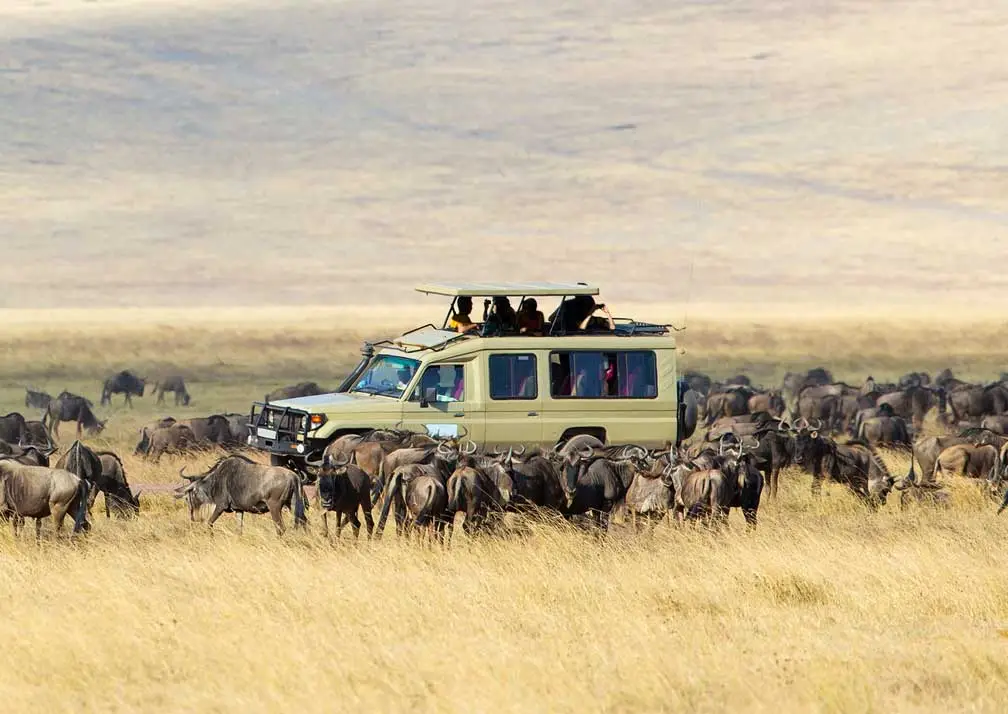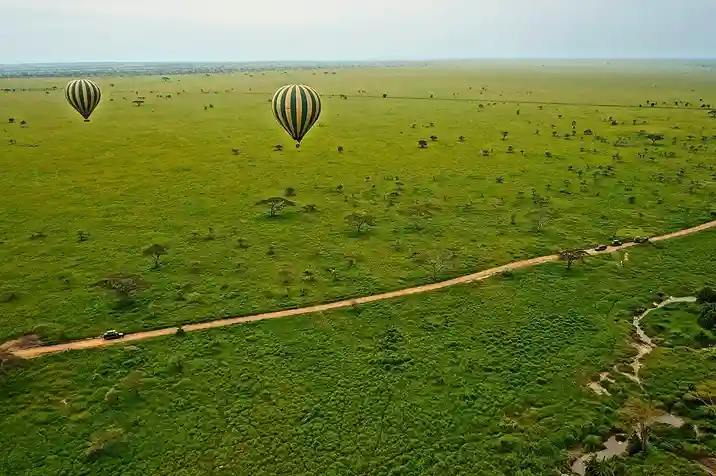Tanzania Safari: The Perfect 3-Day Serengeti Adventure (With Real Costs 2026)
The 3-day Tanzania safari delivers the ultimate African wildlife experience without requiring weeks of travel or a second mortgage. Despite its compact size, the Serengeti hosts one of the planet's most spectacular wildlife concentrations, making it perfect for time-conscious travelers seeking maximum impact.
Surprisingly, a well-planned 3-day safari can showcase the best of the Serengeti and Ngorongoro ecosystems. Unlike longer itineraries, this condensed adventure focuses on wildlife hotspots where you'll encounter lions lounging on kopjes, elephants roaming the savanna, and possibly even witness part of the Great Migration. Additionally, the diversity of accommodation options—from luxury tented camps to budget-friendly lodges—makes this African safari accessible to various travel budgets.
This guide breaks down a realistic day-by-day itinerary, reveals actual 2026 costs, and provides practical booking advice to help you experience the wildlife safari of your dreams without unnecessary expense or planning stress.
Book Your Safari Now3-Day Tanzania Safari Highlights
- Duration: 3 Days, 2 Nights
- Destination: Serengeti National Park, Ngorongoro Crater
- Main Focus: Big Five, Great Migration (Optional), game drives
- Tour Style: Guided safari, small groups (2–8 people)
- Best Time: June–October for 90% wildlife sighting success
- Ideal For: Wildlife lovers, families (5+), adventure seekers

3-Day Tanzania Safari Itinerary
Below is a 3-day Tanzania safari itinerary prepared by Capable Africa Tours to make the most of your time and wildlife viewing chances.
Your adventure begins with a swift journey into the heart of one of Africa's most iconic wildlife havens. Upon landing at Seronera Airstrip, you'll immediately sense the vastness of the Serengeti plains stretching before you, a perfect introduction to your compact yet comprehensive Tanzania safari experience.
Flight from Arusha to Seronera Airstrip
Flying directly into the Serengeti saves precious time and offers stunning aerial views of Tanzania's landscapes. Several airlines operate daily flights from Arusha to Seronera Airstrip in central Serengeti, with journey times typically ranging from 35 minutes to 1 hour and 5 minutes 7. Most travelers select from three daily departure times: early morning (07:45), mid-morning (10:45), or early afternoon (13:00), all arriving at Seronera via Manyara.
A one-way ticket costs between USD 182-265, depending on the airline and season. Popular carriers include Coastal Aviation, Auric Air, and Flightlink Limited, with Auric Air offering 14 nonstop flights weekly and Flightlink providing 7 weekly direct flights.
This flying experience itself becomes part of your safari adventure, offering picture-perfect views over Tanzania's plains. Upon arrival at Seronera, your lodge representative will meet you for a short transfer to your accommodation.
Afternoon game drive in Seronera Valley
After refreshing at your lodge, your first game drive begins in the renowned Seronera Valley—often described as the "throbbing heart" of Serengeti National Park. This valley forms an ecological hub with its network of rivers, particularly the Seronera River, which creates a lifeline for countless species.
The landscape features picturesque savannahs, rolling grasslands, lush riverside vegetation, acacia woodlands, and distinctive rocky outcrops called kopjes. These varied habitats create an ideal environment for your first wildlife encounters. Afternoon drives are especially productive as the changing light creates fantastic photographic opportunities.
Your guide will likely focus on the central Serengeti's rich wildlife concentration, allowing you to immediately experience the park's biodiversity without traveling far from your accommodation.
Wildlife to expect: lions, elephants, giraffes
Seronera Valley has earned its nickname as "The Big Cats Capital in Africa" thanks to its abundant lion populations, leopards, and cheetahs. Lion prides are frequently spotted sleeping under trees or across the plains, with leopards typically resting in acacia trees.
Elephants move in family herds throughout the area, providing memorable sightings, especially along the river areas. Giraffes are commonly seen browsing treetops during afternoon drives. Beyond these flagship species, expect to encounter buffalo, hippos in the river sections, and an impressive array of antelope species.
First-day sightings frequently include zebras, gazelles, impalas, and warthogs. Many visitors report seeing lion prides on their very first day, sometimes within minutes of entering the park. The region's exceptional predator density means your chances of significant big cat sightings start immediately upon arrival.
Optional: Sunset at a tented camp
As daylight fades, your guide will position you for unforgettable sunset views across the savanna. This magical time—when the African sky transforms through vibrant oranges and reds—offers exceptional photography opportunities and allows you to witness the transition between day and night animal activities.
Returning to your tented camp, you'll experience one of the most cherished aspects of a Serengeti safari. Many camps offer sunset drinks around a campfire, where you can discuss the day's sightings while watching the sun sink below the horizon.
Tented accommodations range from luxury options inside the park to mid-range camps near Seronera. These camps blend comfort with authentic wilderness experiences—falling asleep to distant lion roars creates memories that last far longer than the safari itself. Many properties offer escorted walks after dark, as nocturnal predators begin their evening activities surprisingly close to camp.
This first day provides just a taste of the Serengeti's wonders, setting the stage for deeper exploration on your second day.
Dawn breaks over the endless plains as your second day in this wildlife paradise begins. This full day devoted to exploring the Serengeti's heart offers your best chance to witness the complete spectrum of wildlife and landscapes that make Tanzania safaris legendary.
Early morning game drive for predator sightings
Initially, your day starts before sunrise when predators are most active. Between 5:30-7:30 am represents prime time for spotting lions and leopards on the hunt. The cooler morning hours provide ideal conditions for witnessing hunting behavior and territorial displays.
Central Serengeti, specifically Seronera, offers unparalleled big cat sightings thanks to its year-round concentration of resident wildlife. With over 3,000 lions roaming the Serengeti plains, often visible in prides of 10-20 individuals, your chances of meaningful encounters are exceptionally high.
Leopards frequently inhabit the riverine forests and kopjes, though spotting them requires patience and an experienced guide's sharp eye. Cheetahs, meanwhile, prefer open grasslands where they can utilize their famous speed during hunts.
Optional hot air balloon safari
For travelers seeking a truly unforgettable perspective, a hot air balloon safari offers the ultimate way to experience the vastness of the Serengeti. Flights depart at 06:00 from four launch sites, including one near Seronera that operates year-round.
The experience costs USD 599 per person (including a USD 40 Tanapa ballooning fee) and typically lasts between 50-70 minutes. This price includes transfers from your accommodation, the flight itself, and a champagne breakfast after landing.
Your pilot will alternate between higher altitudes for panoramic views and lower sections where you might glide just meters above hippo pods or wandering giraffes. In fact, these skilled pilots can follow rivers and streams, positioning you perfectly for exceptional aerial wildlife photography.
Lunch in the bush or at camp
Following your morning adventures, lunch presents another highlight of your Tanzania safari experience. A bush lunch offers a welcome midday break under acacia trees on the Serengeti's beautiful savanna grasslands.
Unlike basic packaged meals, these setups typically include:
- Four-course hot meals with charcoal-grilled meats.
- Fresh salads, soups, and tropical fruits for dessert.
- Comfortable tables and chairs arranged in scenic locations.
- Optional beverages to complement your meal.
The experience combines exceptional food with the thrill of dining amid nature's soundtrack. Many guests appreciate this peaceful interlude, occasionally spotting wildlife in the distance while enjoying their meal.
Afternoon drive through kopjes and river areas
As temperatures cool in late afternoon, your safari continues through some of the Serengeti's most distinctive landscapes. The rocky outcrops known as kopjes serve as natural vantage points and magnets for predators.
Sametu Kopjes, certainly among the top three highlights in the entire Serengeti ecosystem, hosts the park's largest lion pride. The nearby marsh, fed by underground springs, attracts abundant plains game as it holds the only water source in the area.
River areas present excellent opportunities for wildlife photography. The permanent water sources sustain diverse ecosystems, making them reliable locations for spotting elephants, hippos, and crocodiles. Your guide will position your vehicle strategically at these critical habitats where animals gather, especially during drier periods.
As the day progresses, the changing light creates dramatic photographic conditions across the savanna. Your guide typically focuses on positioning you perfectly for both wildlife sightings and landscape photography as the golden afternoon light bathes the plains.
The final day of your 3-day safari takes you to one of Africa's most extraordinary wildlife settings - the Ngorongoro Crater, a UNESCO World Heritage Site and the world's largest intact volcanic caldera formed two to three million years ago.
Drive to Ngorongoro Highlands
Departing from central Serengeti, the journey to Ngorongoro Conservation Area covers approximately 140 km of picturesque landscape. From Serengeti to Ngorongoro, you'll travel through varying terrain as you gradually ascend into the highlands. The drive from the Ngorongoro Conservation Area gate (Loduare) to the crater entrance takes roughly one hour across 15 km of winding roads.
As you travel, the scenery transforms dramatically - from the open grasslands of Serengeti to the lush, emerald-green vegetation of Ngorongoro Highlands. Many travelers report feeling transported to another era as they wind through the dense, primeval forest covering the crater rim. Your accommodation might be situated along this rim, offering breathtaking views across the caldera below.
Early descent into the crater
Experienced guides typically aim for an early start, often departing lodges by 6:00 AM to be among the first vehicles entering the crater. This early timing is strategic - wildlife is most active during cooler morning hours, and you'll avoid the midday crowds that gather at popular sightings.
The descent involves navigating a steep 600-meter drop along a narrow access road through magnificent highland forest. This initial journey provides excellent birdwatching opportunities, as numerous species inhabit the different tree varieties along the crater walls.
Once on the grassy crater floor, you'll discover why Ngorongoro is considered Tanzania's most productive Big Five destination. The crater floor teems with wildlife - over 25,000 animals inhabit this relatively compact 260 square kilometer area. Within this natural enclosure, you'll encounter vast concentrations of grazing herbivores, including approximately 10,000 wildebeest and 5,000 zebras.
Spotting black rhinos and flamingos
Ngorongoro Crater offers one of East Africa's best opportunities to observe critically endangered black rhinos in their natural habitat. Though exact numbers aren't publicized for conservation reasons, estimates suggest between 25-50 black rhinos currently reside in the crater.
For optimal black rhino sightings, your guide will likely focus on key areas:
- Lerai Forest - where rhinos often sleep during the night and slowly move out in the early morning.
- The stretch between Lerai and Gorigor Swamp - a common morning feeding ground.
- Gorigor Swamps - where tall grasses provide cover for these shy creatures.
Equally impressive are the flamingo flocks that gather around Lake Magadi's alkaline waters. During the wet season (September to April), hundreds of thousands of pink flamingos create a stunning spectacle against the crater backdrop. The lake also attracts numerous other water birds, creating a colorful ornithological display.
Lunch at Lake Magadi
Midday offers a welcome break with lunch near picturesque Lake Magadi. Unlike typical packed safari meals, Ngorongoro lunches can be quite elaborate. Options range from picnic-style setups in forest clearings to full-cooked meals served in acacia groves.
The picnic sites near Ngoitokitok Springs offer exceptional dining locations, often positioned near hippo pools where you can observe these massive animals while enjoying your meal. Some operators even arrange private picnic spots on the crater rim with panoramic views of this natural wonder below.
After lunch, you'll have time for additional exploration before beginning the climb back up the crater wall. Many guides use this afternoon period to search for animals you might have missed in the morning, possibly including the crater's unusually pale black rhinos - their distinctive coloration resulting from bathing in saline Lake Magadi and rolling in the fringing salt flats.
This final day provides a fitting climax to your Tanzania safari adventure, showcasing extraordinary wildlife density within one of Africa's most dramatic landscapes.
Wildlife Highlights of the Serengeti on Your 3-Day Tanzania Safari
Few places on Earth match the Serengeti's remarkable concentration of wildlife, making it the crown jewel of Tanzania's safari destinations. Even on a 3-day safari, visitors can witness an extraordinary variety of animals in their natural habitat.
The Big Five and beyond
The Serengeti hosts all members of Africa's iconic Big Five—originally named by hunters as the most difficult animals to track on foot. Today, these magnificent creatures top most safari wishlists.
Lions reign supreme across the plains, with the Serengeti supporting 3,000-4,000 individuals—likely Africa's largest remaining population. The central Seronera area offers exceptional viewing opportunities where multiple prides can often be spotted during a single game drive. Many prides have developed unique behaviors, including the tree-climbing lions increasingly observed during hot days.
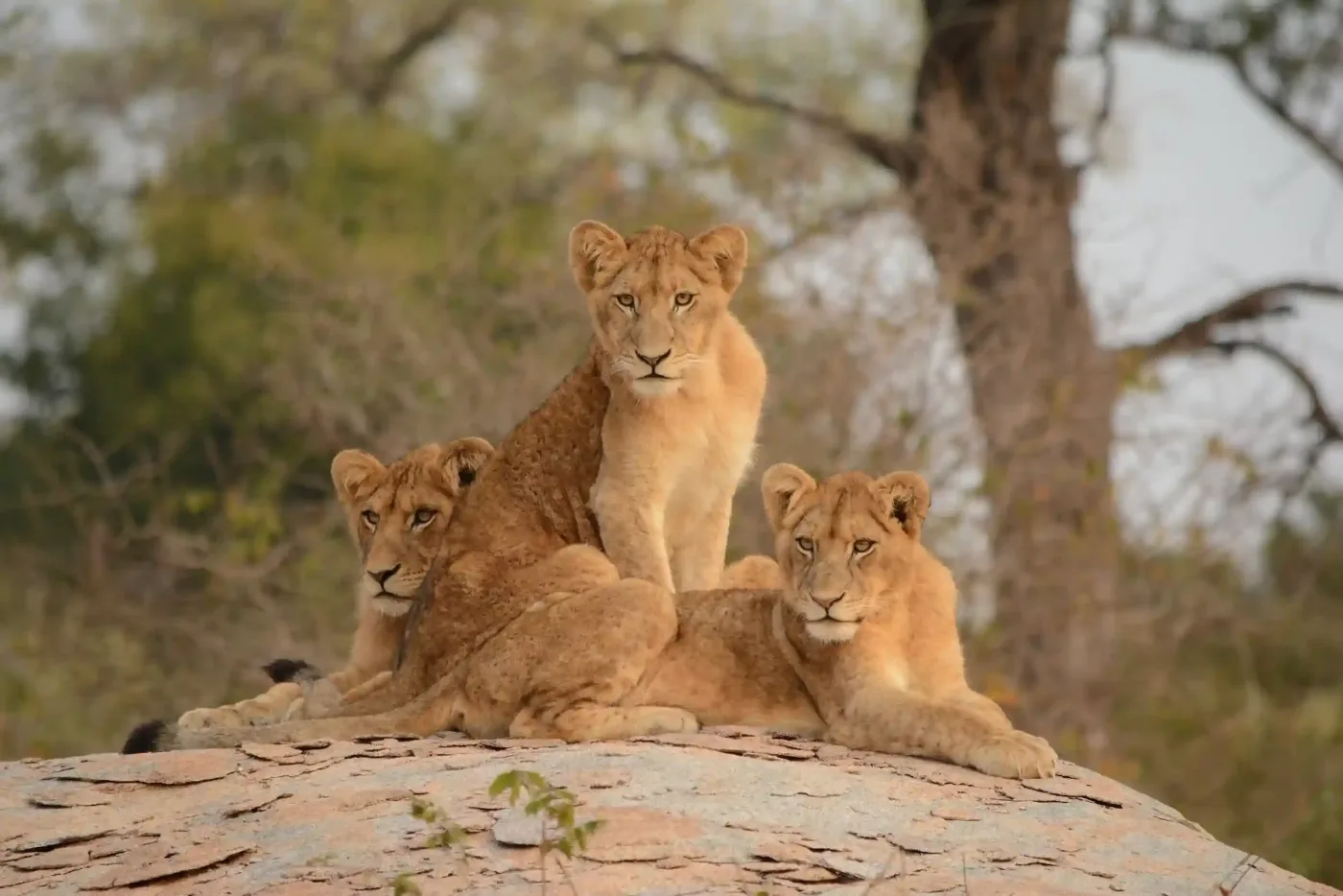
Leopards, though naturally elusive, maintain a healthy population of approximately 1,000 individuals throughout the park. These solitary predators prefer the riverine forests and kopjes where they can be spotted resting on tree branches, particularly in the sausage trees around Seronera.
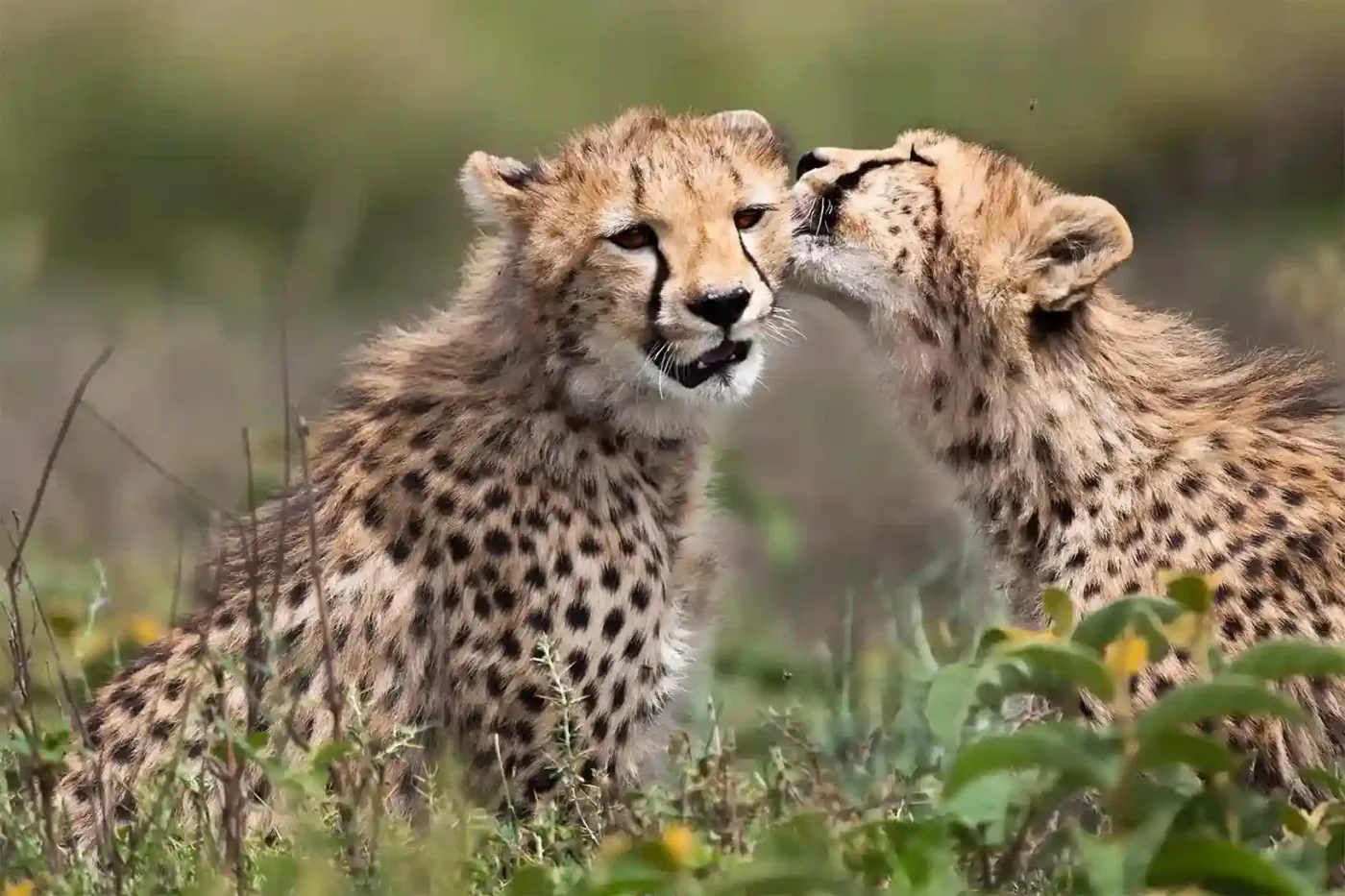
Elephants roam in family herds primarily along riverbanks and in woodland areas. These peaceful giants communicate through low-frequency rumbles and demonstrate strong family bonds, making them fascinating to observe.

Buffalo appear in impressive numbers—some herds exceeding 1,000 animals. Though appearing docile, they're considered among Africa's most dangerous animals, particularly when injured or threatened.
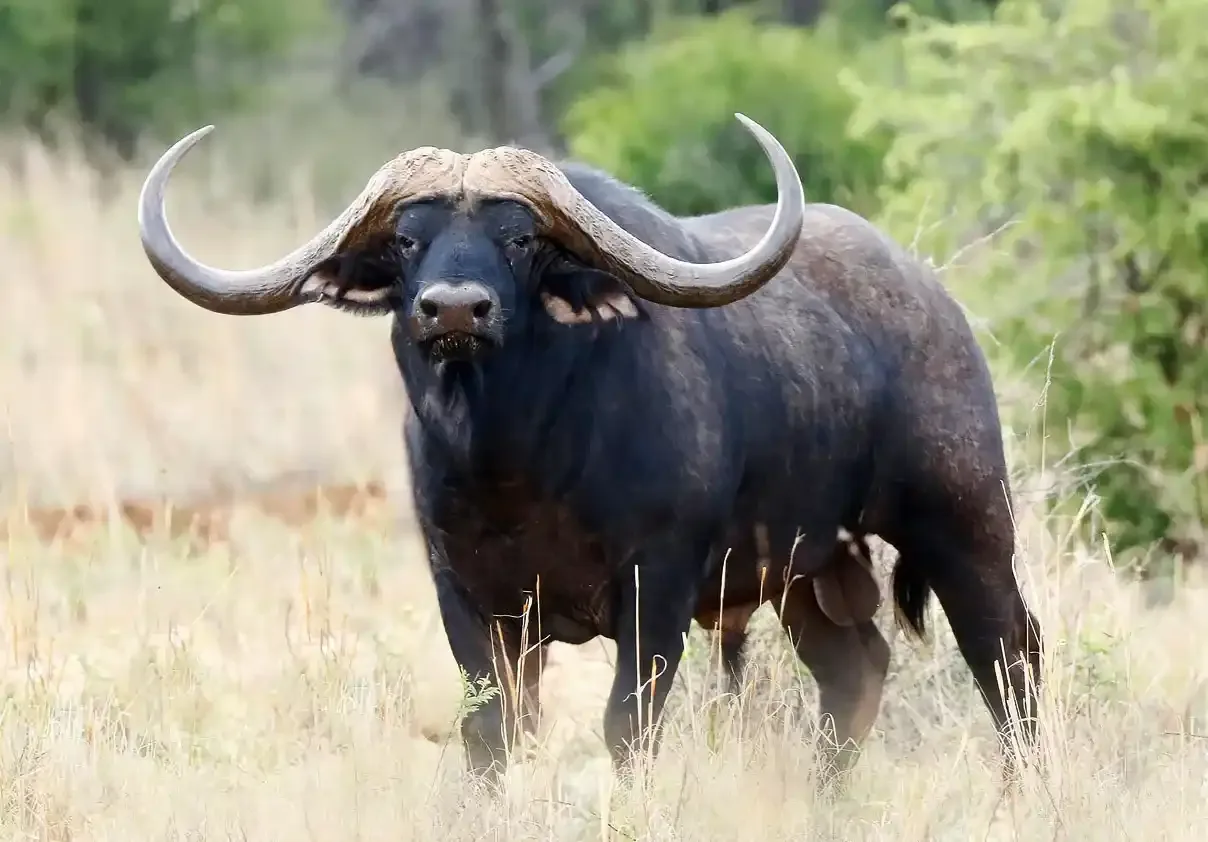
Rhinos represent the most challenging Big Five member to spot, with fewer than 50 black rhinos remaining in the ecosystem. The Moru Kopjes area offers your best chance of seeing these critically endangered creatures.
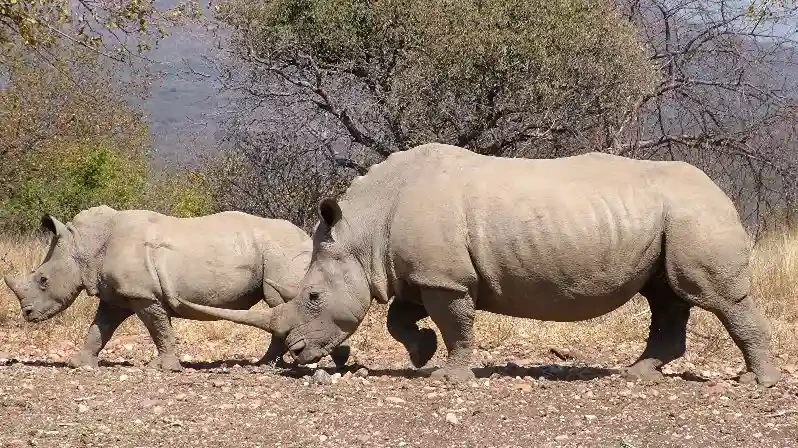
Beyond these flagship species, the Serengeti teems with giraffes, hippos, and an astonishing variety of antelope species, including impalas, topi, and Grant's gazelle.
Great Migration (seasonal)
The Great Migration stands as nature's greatest wildlife spectacle—a continuous movement of approximately 1.5 million wildebeest, 200,000 zebras, and 300,000 gazelles circling through the Serengeti-Mara ecosystem. This endless journey follows rainfall patterns in pursuit of fresh grazing, essentially functioning as a natural ecosystem management system.
The migration follows a relatively predictable annual cycle:
- December-March: Herds congregate in the southern plains for calving season, with approximately 500,000 calves born during a two-to-three-week window in February.
- April-June: Animals begin their trek northward through the central Serengeti as the plains dry out.
- July-October: Herds reach northern Serengeti and Kenya's Maasai Mara, facing dramatic river crossings.
- November: Short rains prompt southward movement, completing the cycle.
This perpetual movement prevents overgrazing, fertilizes the soil, and maintains the grasslands' ecological balance. Furthermore, it provides essential sustenance for predators, creating a complete ecological cycle.
Rare sightings: cheetahs, servals, jackals
The Serengeti offers opportunities to witness some of Africa's most specialized and uncommon predators. Cheetahs thrive in the open grasslands, with an estimated population of 500-600 individuals, particularly dense in the eastern plains, where they can fully utilize their legendary speed 7. These graceful cats represent the most visible of the rare predators.
Spotted hyenas actually outnumber lions in the ecosystem, forming sizeable groups across open areas while remaining solitary in woodland regions. Their complex social structures make them fascinating to observe.
For the truly fortunate, sightings might include servals—elegant, medium-sized cats with distinctive spotted coats—typically observed hunting at dawn or dusk. Similarly, African wildcats and civets occasionally appear during early morning or late afternoon drives.
Perhaps most exceptional would be glimpsing African wild dogs. Once common until the 1970s, the disease decimated their population by 1992, but reintroduction efforts have established approximately 250 individuals northeast of the park. These highly social predators represent one of Africa's most endangered carnivores.
Other unusual sightings include bat-eared foxes, golden wolves, caracals, honey badgers, and striped polecats—all contributing to the Serengeti's status as one of the world's premier wildlife destinations.
3-Day Tanzania Safari Gallery

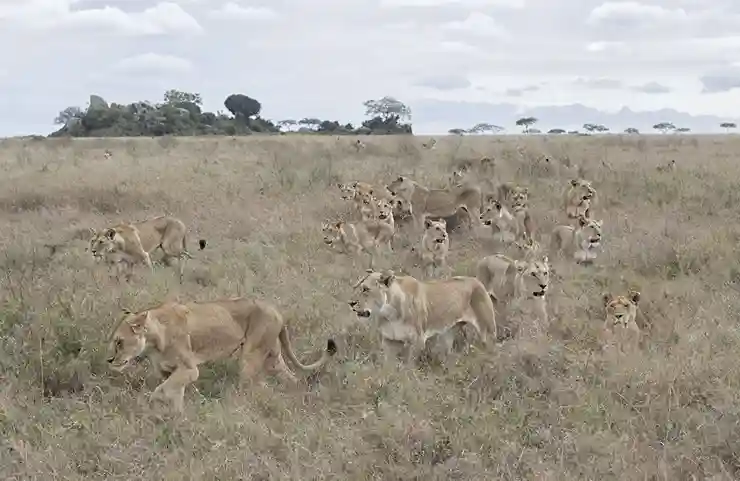

3-Day Tanzania Safari Accommodation Options for Every Budget
Choosing where to stay forms a crucial part of your Serengeti adventure, with accommodations ranging from ultra-luxurious to refreshingly rustic. The Serengeti offers lodging options for every preference and financial plan, ensuring everyone can experience this natural wonder.
Luxury tented camps inside the park
Immersing yourself in luxury while surrounded by wilderness creates an unparalleled safari experience. Signature Serengeti offers newly constructed luxury tents on wooden platforms, all facing west for spectacular sunset views, complete with king-sized beds, study areas, ensuite glass showers, and private verandahs for wildlife watching.
For uncompromising opulence, One Nature Nyaruswiga provides an exclusive experience in central Serengeti at approximately USD 1,654 per person per night. Likewise, Singita Mara River Tented Camp delivers extraordinary luxury from just six exclusive tents overlooking the famous river, priced around USD 2,045 per person nightly.
Several camps specialize in following the Great Migration, including &Beyond Serengeti Under Canvas, a mobile tented camp that relocates several times yearly to position guests for optimal wildlife viewing, starting from USD 1,005 per person per night.
Mid-range lodges near Seronera
Fortunately, experiencing the magic of central Serengeti doesn't require unlimited funds. Lemala Ewanjan Tented Camp offers comfortable tented accommodations with private plunge pools from USD 429 per person nightly, whereas Siringit Serengeti Camp provides authentic safari elegance at approximately USD 547 per person.
Seronera area accommodations like Thorn Tree Tented Camp feature 15 classic en-suite tents on elevated wooden platforms with flat-screen TVs, minibars, and verandas overlooking the plains, starting around USD 200 per night. Mbali Mbali Soroi Serengeti Lodge specializes in family-friendly experiences at USD 370 per person per night.
Serengeti Acacia Migration Camp represents another excellent mid-range option, strategically positioned in the Kogatende area as a semi-permanent mobile tented camp designed to anticipate migration movements while offering first-class amenities.
Budget-friendly options outside the park
Budget-conscious travelers can still enjoy remarkable Serengeti experiences without compromising wildlife viewing. Kati Kati Camp provides an authentic bush experience at reasonable rates, designed as a mobile tented camp that follows the Great Migration. The camp features simple but comfortable en-suite tents with private bathrooms, mosquito nets, and cozy beds.
Serengeti Sound of Silence stands out among affordable options, balancing comfort with maintaining a connection to the surrounding nature. Strategically located to facilitate wildlife viewing, this camp delivers excellent value while allowing guests to experience the Serengeti's magic.
Africa Safari Maasai Boma offers unique budget accommodations inspired by traditional Maasai construction. Its ideal location between Lake Natron, Serengeti National Park, and Ngorongoro makes it perfect for travelers exploring multiple destinations.
Many budget properties are situated just outside park boundaries, providing significant advantages beyond cost savings. These locations often permit activities prohibited inside the national park, such as night drives and walking safaris, enhancing your overall experience.
Real Costs of a 3-Day Tanzania Safari in 2026
Understanding the financial aspects of a Tanzania safari helps travelers plan appropriately without surprises. Planning a 3-day Serengeti adventure requires careful budgeting as costs can vary dramatically based on several factors.
3-Day Private safari cost breakdown
Budget-conscious travelers can expect to pay approximately USD 450 for a 3-day mid-range safari per person, with luxury options starting from USD 1,700 for the same duration. For two people, a standard 3-day mid-range Serengeti safari typically costs around USD 2,770.
A comprehensive breakdown of a mid-range 3-day safari includes:
- Park entry fees: USD 247.80
- Concession fees: USD 212.40
- Mid-range accommodation: USD 900
- Game package with guide and vehicle: USD 1,260
- Meals and drinks: USD 150.
Notably, booking with local Tanzanian operators often yields substantial savings. One traveler reported paying USD 6,114 total for two people on a 5-day safari (approximately USD 3,057 per person), compared to initial quotes from international operators exceeding USD 10,000.
Fly-in vs drive-in safari costs
For small groups of one to three travelers, fly-in safaris often prove more economical despite higher per-ticket costs. Round-trip flights between Arusha and Serengeti airstrips range from USD 300-600 per person, with one-way tickets costing USD 182-265 depending on airline and season.
Conversely, vehicle hire typically costs USD 250-275 daily regardless of passenger count, making driving more cost-effective for groups of four or more. However, this calculation must account for significantly longer travel times compared to 35-60 minute flights.
Park fees and hidden charges
Park fees constitute substantial costs often overlooked in planning. For 2026, Serengeti entry fees for foreign visitors are USD 83 per adult per day during peak season (May 16-March 14), plus 18% VAT. Additionally, staying inside the park incurs concession fees of USD 60 per person daily.
Hidden expenses include:
- Ngorongoro Crater descent fee (USD 250 per vehicle).
- Hot air balloon safari (USD 500-600).
- Tipping (USD 10-20 per guide per day).
- Single supplements for solo travelers (USD 30-100 daily).
Contact us now to Start Planning Your 3-Day Classic Tanzania safari!
Tips for saving money on your 3-Day Tanzania Safari
Traveling during shoulder seasons yields significant savings—prices typically drop 15-30% during March-May and November. Visiting during these periods offers excellent wildlife viewing with fewer crowds.
Booking directly with Tanzanian companies instead of international operators typically saves thousands. Group safaris split vehicle costs across more travelers, substantially reducing per-person rates.
Strategically combining parks helps minimize transfer costs and entrance fees. Indeed, staying in accommodations just outside park boundaries often permits additional activities like night drives while lowering accommodation costs.
What to Pack for Your 3-Day Tanzania Safari
To enjoy your 3-day Tanzania safari comfortably, pack lightweight, breathable clothing in neutral colors to blend with the environment. Bring a wide-brimmed hat, sunglasses, and sunscreen to protect against the sun. A light jacket is useful for cooler mornings and evenings. Don't forget sturdy walking shoes or boots, a reusable water bottle, binoculars for wildlife viewing, and a camera to capture unforgettable moments. Below is a packing list for your 3-day Tanzania safari. It includes all the essentials for an unforgettable adventure with Capable Africa Tours.
- Neutral Clothing: Long-sleeved, beige/khaki attire for sun protection and blending in.
- Binoculars: For spotting distant wildlife like cheetahs or birds.
- Sunscreen & Hat: Essential for protection in the open savannah.
- Insect Repellent: For evenings near rivers and grasslands.
- Camera with Zoom: Capture the migration and Big Five up close.
- Reusable Water Bottle: Stay hydrated during 2–5-hour game drives.
- Light Jacket: For cool early mornings and evenings.
3-Day Tanzania Safari Price Inclusions & Exclusions
3-day Tanzania safari Price Inclusions usually cover park entry fees, accommodation, game drives with a professional guide, and most meals. 3-day Tanzania safari Price Exclusions can include international flights, travel insurance, personal expenses, and optional activities. Understanding these details in advance helps you budget well and avoid surprises during your trip. Below is a detailed breakdown of the price inclusions and exclusions for a 3-day Tanzania safari with Capable Africa Tours.
Price Inclusions
- Round-trip transfers from Arusha
- 4WD safari vehicle with pop-up roof
- Professional English-speaking guides
- All Serengeti park entry fees
- Full-board meals and tented camp lodging
- Bottled water during game drives
Price Exclusions
- International flights to Tanzania
- Travel or medical insurance
- Tips for guides (~$10 pp/day, optional)
- Personal expenses (souvenirs, etc.)
- Optional activities like balloon safaris
- Alcoholic beverages
Ready for Your Serengeti Safari?
Join Capable Africa Tours for a 3-Day Tanzania Safari to witness Tanzania’s wildlife spectacle, from the Great Migration to the Big Five.
- 90% success rate for Big Five sightings
- Expert-guided game drives in 4WD vehicles
- Eco-friendly tented camps with all meals
- Small groups for intimate experiences
- Supports wildlife conservation and Maasai communities
Limited spots available for this iconic safari—book now to secure your adventure!
Book This Safari NowHow to Book the Perfect Safari in Tanzania
Securing your Tanzania safari begins with careful planning, as the right preparations determine the quality of your wildlife experience. First and foremost, investing time in research pays dividends when exploring the Serengeti's vast plains.
Choosing a reputable local operator
When selecting a safari company, prioritize those with positive reviews on TripAdvisor and TrustPilot. Look for operators displaying awards and acclamations on their website, and verify how long they've been in business. Booking directly with Tanzanian companies often yields substantial savings compared to international operators. Check how companies accept payment—reputable local operators typically offer secure online payment options rather than requesting Western Union transfers or cash.
Group vs private safari: Which is the Best option for your 3-Day Tanzania Safari?
Group safaris distribute costs among participants, making them significantly more budget-friendly for solo travelers or couples. Private safaris, alternatively, offer complete customization—you control the schedule, can spend extra time observing specific wildlife, and enjoy personalized attention from your guide. Group experiences foster social connections with fellow travelers, ideal for those who enjoy meeting new people, whereas private safaris provide seclusion, perfect for honeymoons and family trips.
Best time to book Tanzania Safari for 2026
For peak season visits (June-October or January-March), book 12-18 months in advance to secure prime accommodations near migration hotspots. For off-peak travel during the green season (April-May or November), booking 6-9 months ahead usually suffices. Summer 2026 safaris require early booking since limited accommodations fill quickly, particularly mobile camps that follow the migration. Accordingly, early reservation not only ensures availability but may offer cost savings through early booking discounts.
Book Your 3-Day Tanzania Safari
Why Book This 3-Day Tanzania Safari.
Tanzania's iconic Serengeti delivers a remarkable wildlife experience regardless of your timeframe or budget. Throughout this guide, we've shown how a strategically planned 3-day safari captures the essence of this extraordinary ecosystem without requiring weeks of travel. The exceptional wildlife density, efficient transportation options, and variety of accommodation choices make short safaris surprisingly comprehensive.
Your three-day adventure will likely include unforgettable encounters with lions lounging on kopjes, elephants moving majestically through golden grasslands, and perhaps even the spectacle of the Great Migration. Each day maximizes wildlife viewing opportunities – from the predator-rich plains of central Serengeti to the breathtaking biodiversity of Ngorongoro Crater.
Budget-conscious travelers can experience this safari for approximately USD 450 per person with mid-range options, while luxury experiences start around USD 1,700. Careful planning through local operators, strategic timing during shoulder seasons, and thoughtful selection between fly-in and drive-in options can significantly reduce costs without compromising the experience.
Booking 6-18 months ahead proves essential, depending on your preferred travel season, especially for peak migration periods. Many travelers find combining a Serengeti safari with other Tanzania attractions like Zanzibar beaches or Kilimanjaro treks creates the perfect balance of adventure and relaxation.
The Serengeti beckons with its timeless landscapes and extraordinary wildlife concentration. Even three days here will forever change how you view the natural world. This compact yet comprehensive safari delivers exactly what many travelers seek – authentic wilderness immersion without excessive time commitment or unreasonable expense. Tanzania awaits, ready to exceed your wildest safari expectations.


